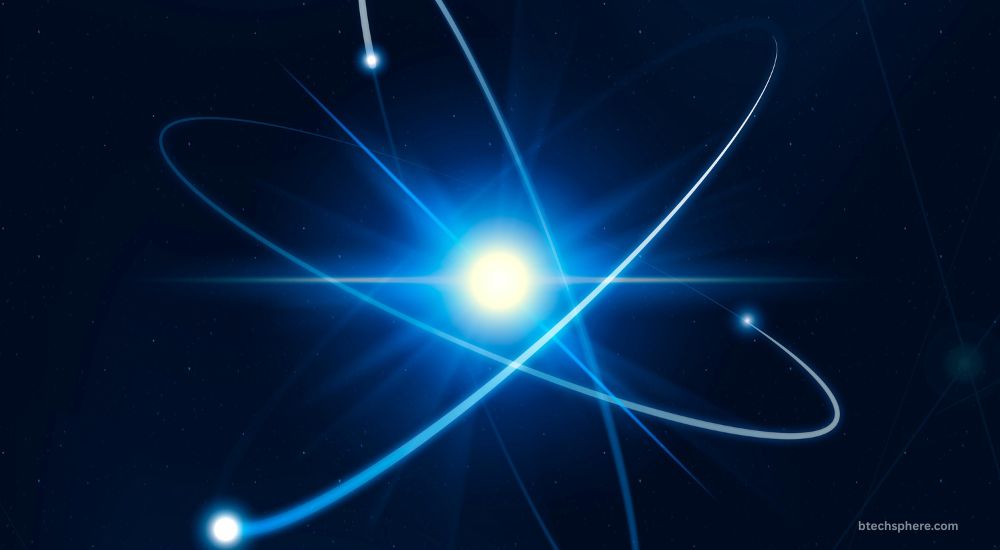In today’s fast-evolving technological landscape, the concept of transphotonen has captured the imagination of scientists, engineers, and innovators. This fascinating field bridges the gap between advanced physics and futuristic energy solutions. With companies like Transphoton Corporation at the forefront of development, the idea of manipulating photons for energy transmission and high-speed data transfer is no longer a far-off dream. This article explores what transphotonen is, how it works, and why it could redefine the future of energy and communication systems.
What Is Transphotonen?
Transphotonen refers to the theoretical or experimental manipulation of photons—light particles—for transmitting energy or information beyond conventional electromagnetic methods. The term is often used to describe advanced technologies that harness photonic energy transfer, creating systems that are faster, cleaner, and more efficient. The idea is based on utilizing photons not only as carriers of light but also as direct energy transmitters that can move through mediums without significant energy loss. This is what makes transphotonen one of the most promising frontiers in modern physics and engineering.
Origins and Development of Transphotonen Technology
The concept of transphotonen didn’t emerge overnight. It evolved from decades of research in quantum physics, photonics, and energy science. Early studies in light-based communication systems paved the way for fiber optics, while quantum research opened new possibilities for manipulating photons at the smallest scales. The growing need for clean and efficient energy transmission pushed researchers to explore photonic-based energy systems, ultimately leading to the formation of innovative ventures like Transphoton Corporation that specialize in transphotonen applications.
The Role of Transphoton Corporation
Transphoton Corporation plays a pioneering role in bringing transphotonen technology from scientific theory into practical application. The company focuses on transforming the way energy and data are transmitted using light-based systems rather than traditional electrical methods. Its mission revolves around advancing photonic technologies that promise higher efficiency, sustainability, and speed in energy transfer and communication.
Key Points:
- Transphoton Corporation is a leading innovator in developing transphotonen-based systems.
- It focuses on creating energy-efficient and high-speed photonic technologies.
- The company integrates nanotechnology and quantum computing in its research.
- Its goal is to make transphotonen applications scalable and commercially viable.
- Transphoton Corporation collaborates with global research institutions to push the boundaries of photonic energy systems.
How Transphotonen Works
The mechanism behind transphotonen technology revolves around controlling photon flow with precision. Instead of relying on traditional electricity conduction, transphotonen systems use light-based particles to carry energy across mediums.
This is achieved through specialized photonic pathways, waveguides, and nanostructures designed to channel photons efficiently. These systems drastically reduce heat loss, making them more energy-efficient than conventional electrical systems. Additionally, since photons move at the speed of light, transphotonen technology enables incredibly fast communication and data transfer rates.
Applications of Transphotonen Technology
The potential applications of transphotonen are vast and transformative. In energy systems, it could revolutionize how power is transmitted, reducing dependency on traditional electrical grids. In computing, transphotonen circuits can replace slower electronic transistors, resulting in faster and more efficient processors.
In telecommunications, photonic data transfer could support ultra-fast internet speeds and secure quantum communications. Even medical imaging and diagnostics may benefit, as transphotonen systems offer enhanced precision and non-invasive scanning capabilities.
Advantages of Transphotonen Over Traditional Technologies
Transphotonen technology offers remarkable advantages compared to traditional electrical and data transmission systems. By using photons instead of electrons, it provides a more advanced, efficient, and eco-friendly approach to energy and communication.
Key advantages include:
- Higher Efficiency:
Transphotonen minimizes energy loss during transmission because photons move without resistance, allowing nearly lossless energy transfer across systems. - Faster Data Transmission:
Since photons travel at the speed of light, data can be transmitted almost instantaneously, making it ideal for modern communication and computing applications. - Reduced Heat Generation:
Unlike electronic systems that produce significant heat, transphotonen generates minimal thermal waste, ensuring stable performance and reducing cooling requirements. - Environmentally Friendly:
The use of light-based energy systems reduces reliance on fossil fuels and heavy metals, aligning with global goals for sustainability and green technology. - Improved Reliability:
Transphotonen systems are less prone to electromagnetic interference, offering more consistent performance in communication and energy transfer. - Scalability and Future Potential:
The technology’s adaptable nature allows it to integrate seamlessly with future innovations, such as quantum computing and photonic networks, ensuring long-term relevance and scalability.
Overall, transphotonen technology stands as a major leap forward, delivering speed, efficiency, and sustainability that traditional systems cannot match.
Transphotonen in Quantum Communication
In the realm of quantum communication, transphotonen serves as a vital component for creating secure, unbreakable communication channels. By manipulating photon states, information can be transmitted in a way that is immune to interception. This principle is already being tested in quantum key distribution (QKD) systems. As this technology matures, it could revolutionize cybersecurity and data protection, ensuring absolute privacy for both personal and corporate communications.
Environmental Impact of Transphotonen
Unlike traditional energy systems that rely on burning fossil fuels or using heavy metals, transphotonen-based technologies have a significantly lower environmental footprint. Since energy is transmitted through light rather than physical conductors, there’s less material waste and reduced heat production.
This not only enhances efficiency but also aligns with global sustainability goals. In a world where energy conservation is becoming increasingly crucial, transphotonen could play a major role in shaping a greener technological future.
Challenges Facing Transphotonen Development
Despite its immense potential, the transphotonen field still faces major challenges. Controlling photons at a practical scale requires advanced materials and precise engineering. Manufacturing costs remain high due to the complexity of photonic circuits. Furthermore, integrating these systems into existing infrastructure poses logistical and compatibility issues. Researchers are working tirelessly to overcome these hurdles through innovative material design, miniaturization techniques, and hybrid energy systems that combine photonic and electronic principles.
The Future of Transphoton Corporation
The future of Transphoton Corporation looks promising as the company continues to invest in research and innovation. Its partnerships with academic institutions and tech companies enable continuous development of new applications for transphotonen technology. With growing interest in renewable energy and high-speed communication, Transphoton Corporation could soon become a global leader in the next generation of photonic-based technologies. The company’s commitment to sustainability and innovation positions it at the heart of future energy revolutions.
Transphotonen and Artificial Intelligence
The fusion of transphotonen and artificial intelligence (AI) could redefine the computing landscape. Photonic chips powered by transphotonen principles can process data at speeds that far exceed traditional silicon-based processors. This means AI systems could analyze massive datasets almost instantaneously, improving decision-making, automation, and machine learning capabilities. The combination of light-based computing and AI marks a new era of intelligent systems that are faster, smarter, and more efficient.
Economic and Industrial Impact
The rise of transphotonen technology is expected to reshape economies and industries on a global scale. Its potential to deliver faster communication, efficient energy transfer, and cleaner production methods opens countless business opportunities across various sectors.
- Boost in Industrial Efficiency: By minimizing energy loss and increasing data transmission speeds, industries can operate with greater precision and reduced costs. This improvement enhances manufacturing productivity and reduces operational delays.
- Creation of New Job Markets: The growth of transphotonen-based industries will demand skilled workers in photonics, quantum engineering, and nanotechnology, leading to new employment opportunities worldwide.
- Economic Growth Through Innovation: Companies investing in transphotonen research and infrastructure are likely to drive technological advancement, contributing to GDP growth and attracting global investors.
- Sustainability and Reduced Costs: Transphotonen’s energy-efficient design can significantly lower carbon emissions, reduce power expenses, and support the global shift toward renewable energy solutions.
- Global Competitiveness: Nations that adopt transphotonen early will gain a strategic edge in technology exports and industrial modernization, positioning themselves as leaders in the next wave of digital and energy revolutions.
In essence, transphotonen technology does not only symbolize innovation—it represents an economic revolution that could transform how industries function, save resources, and shape the future of sustainable development.
Why Transphotonen Represents the Next Technological Leap
Every era of innovation has its breakthrough, from electricity to the internet, and transphotonen may very well be the next one. Its capacity to harness light for both power and communication reflects a monumental shift in how humans interact with technology. The seamless combination of speed, efficiency, and sustainability makes transphotonen a foundation for future industries. As it continues to evolve, it could bridge the gap between today’s energy limitations and tomorrow’s possibilities.
Conclusion
Transphotonen is more than just a scientific concept; it represents the future of energy, communication, and computing. With Transphoton Corporation leading the way, the potential of photonic energy transfer could soon become part of everyday life. As challenges are resolved and innovations continue, transphotonen stands poised to transform how we understand and utilize energy. The world is on the brink of a light-powered revolution — and transphotonen is the key that could unlock it.











